When Hurricane Katrina hit during the summer of 2005, residents in New Orleans and its surrounding areas were forever changed. Over 1,800 people died; 1 million people were displaced. The disaster is now considered one of the costliest in history, amounting to $125 billion in damages. Meanwhile, the nonprofits that went to work aiding the victims of Katrina made an immense impact, leveraging an unprecedented $4.2 billion in donations.
Hurricane Katrina brought out the best in people who wanted to help, amplifying their generosity and care. At the time, I was a young data scientist working with a humanitarian organization to identify ways to create longer-lasting relationships with “disaster donors.”
Through this work, I uncovered an interesting trend: Donors that gave “unusual” amounts, like $26.38 instead of rounded gifts like $25.00, were better retained and donated at much higher frequencies. Without deep analysis, my team would never have uncovered this insight. Traditional methods grouped donors by the size of their donations — not more nuanced patterns that could help increase engagement. This experience taught me how data could help doers of good maximize their efforts.

As Bonterra’s senior vice president of data science, I lead a team responsible for equipping social good organizations with innovative technology. I often ask myself: What impact could technology like generative artificial intelligence (GenAI), automation, neural networks, and machine learning (ML) have had in response to disasters of the past? How can we use these technologies now to reduce friction and increase impact, while improving the donor and volunteer experience? Moreover, how can we ensure AI serves the greatest good?
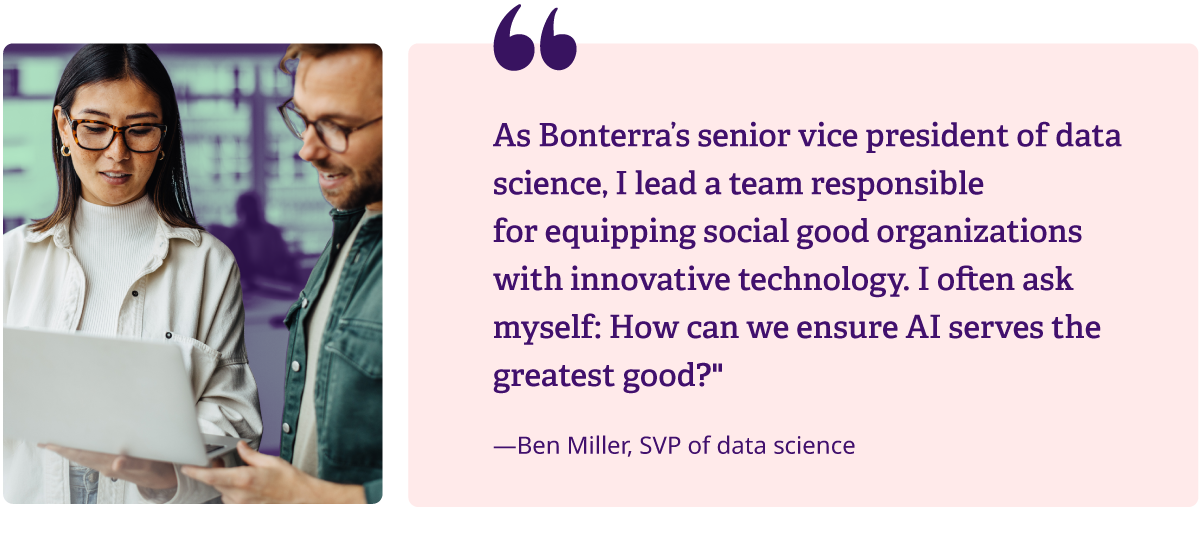
How AI will revolutionize the social good ecosystem
The private sector has already shown us what’s possible with AI. Data innovation has accelerated businesses’ ability to scale at unprecedented rates. Credit card companies utilize fraud detection; advertising agencies leverage targeted communications; chatbots handle customer service calls. These are just a few examples. It’s worth considering how the same application of technology could transform the nonprofit sector, which has historically lagged when it comes to adoption.
Compared to for-profit companies, McKinsey’s Global Survey found that 72% of businesses have adopted AI in at least one business function in 2024, up from 55% in 2023. Nonprofits shouldn’t be excluded from this growth, and both donors and recipients are poised to benefit.
Organizations that are willing to invest the time, talent, and trust to implement AI today will be poised to maximize their impact and prepare for future innovations. Those who don’t will get left behind.
Nonprofit leaders must consider these three benefits that AI can provide:
1. Democratization
When I helped found DonorTrends in 2008, we used genetic algorithms to analyze donation data and predict trends and insights to optimize nonprofit fundraising. It was a vast improvement from performing extensive data analysis to figure out the right variables and then testing different approaches. In 2015, Google debuted TensorFlow, which democratized data science for businesses by providing an open-source platform for ML. This set off an explosion of innovation. Building AI models once took weeks, if not months. Now statisticians can build multiple models, compare them, and then deploy the strongest contender within minutes.
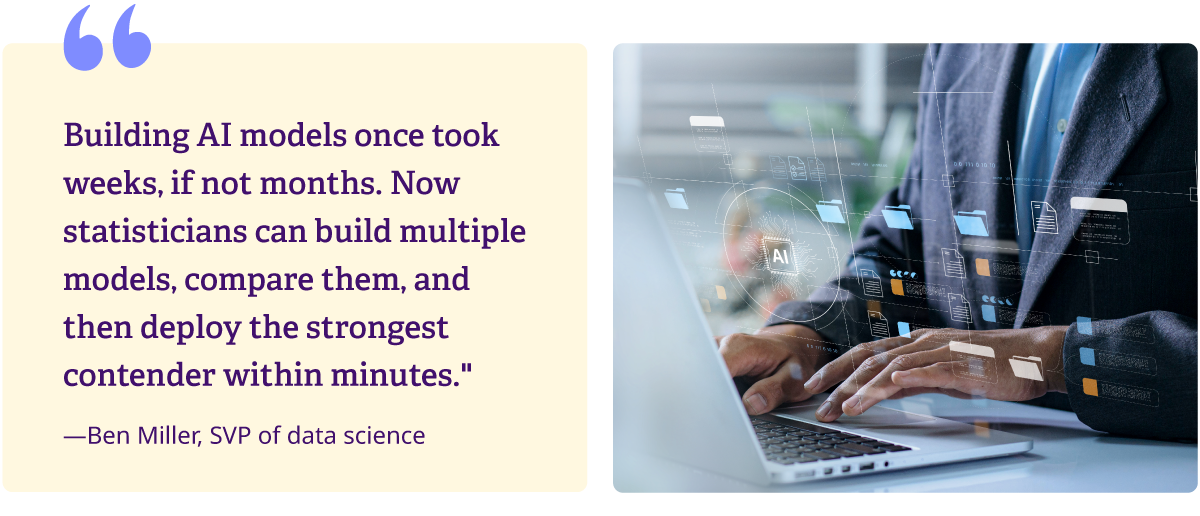
The accessibility of these models has since improved, and large tech companies like AWS and Microsoft are providing user-friendly models that don’t require data science degrees to use. Today, anyone can customize off-the-shelf models to address anomaly detection, customer retention, sentiment analysis, chatbot responses, and more. For nonprofit organizations that are interested in applying AI to their operations, these advances mean the technology and its gains are well within grasp — and don’t require a large financial investment and specialized expertise. Reach, efficiency, scale, and impact — AI can boost all of them.
In Smart Nonprofit: Staying Human-Centered in an Automated World, authors Beth Kanter and Allison Fine point out that the democratization of innovation that flows from AI adoption will change the playing field for the nonprofit sector. “Smart tech has recently reached an inflection point common to technologies that reach everyday use: An enormous increase in computing power meets a dramatic decrease in the cost of the technology. As a result, technology that was previously available only to elite institutions like NASA or embedded in widely complicated systems has suddenly become available to everyday people and organizations for fundraising, accounting, human resources, service delivery, and more.”
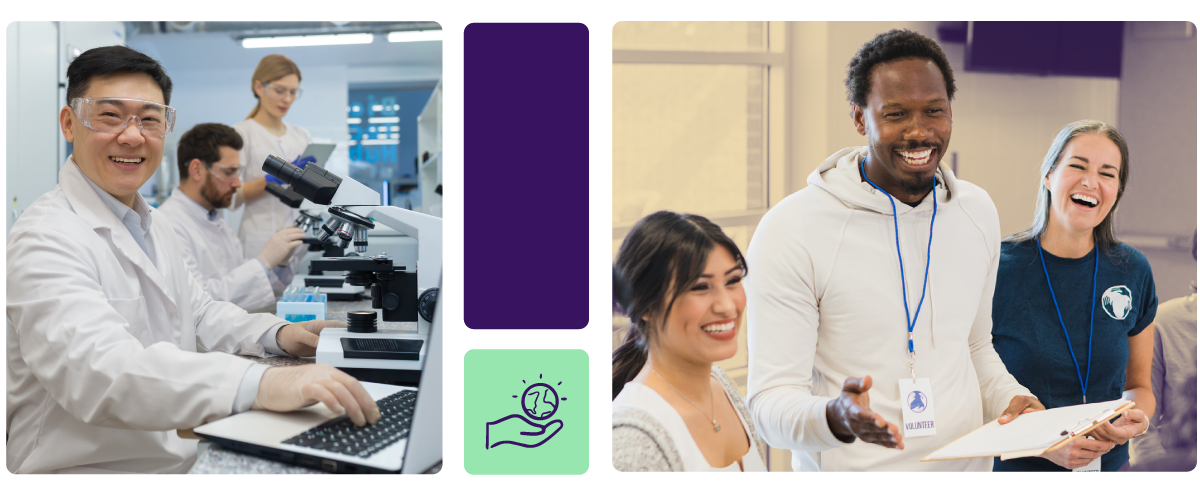
While democratization makes this technology more accessible, it’s more commonly utilized by larger organizations. New or smaller nonprofits may be hesitant to implement smart tech, citing resource constraints or lack of a firm tech plan. These are the obstacles Bonterra is committed to knocking down. Over the last 15 years, we’ve introduced the first ML models in the sector, created automated back tests to illuminate model performance for nonprofits, and built forecasted model performance through our campaign optimizer. We’ve created a Fundraising Optimization Guide to help users unlock the full potential of these advanced technologies, so no organization (large or small) lacks the education they need to get more impact from AI tools like ML and neural network methods like deep learning (DL). Through this, we’re already seeing the accelerated impact that AI can have.
2. Prioritization
The interactions between staff members and donors, funders, and participants can be the most rewarding aspect of nonprofit work. AI will expand those opportunities by freeing staff from mundane tasks like email campaigns, data entry, and redundant forms of communication to prioritize the high-value work and empathy that only humans can provide.
When implemented thoughtfully and strategically, AI will not replace people or create less-personal experiences — it will do just the opposite: Staff will be better mobilized; donors, volunteers, nonprofits, and recipients will be more appropriately matched. All of this will lead to improved service delivery and stronger satisfaction among donors and volunteers, who deserve considered engagement.
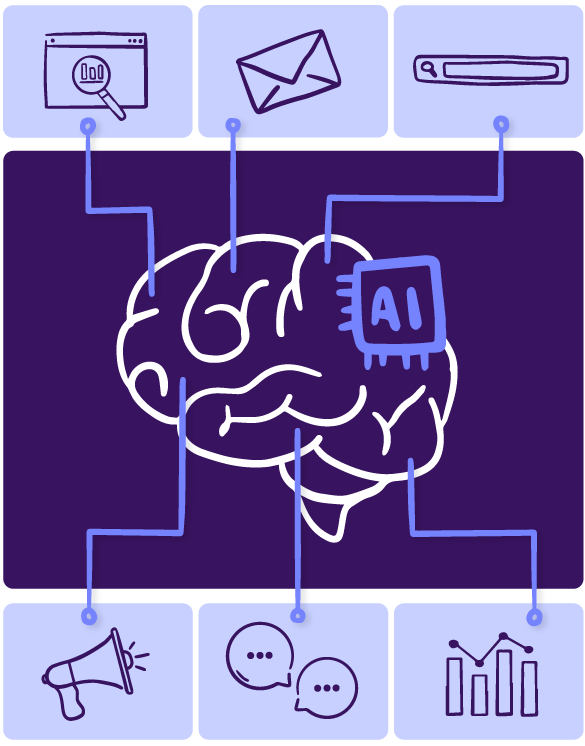
AI can also help organizations prioritize data on a massive scale — allowing users to instruct which pieces of data to pay attention to, where to use it, and why. GenAI will streamline data management, allowing nonprofits to personalize donor interactions and optimize fundraising strategies through predictive analytics.
For example, Bonterra’s Optimized Ask uses AI to help us identify the actions that are most likely taken by our donors. Using four different models working behind the scenes, we can predict the likelihood of a donor upgrading and the likelihood of churn. So, instead of building one model that simply predicts the next gift, we take a data-driven approach using AI. We start by identifying those least likely to give. For this segment, we employ the technique of lowering the gift amount and providing a less aggressive ladder, which increases their propensity to give. Higher propensity givers are kept on a more ambitious recommended gift amount. As a result, our customers have seen a 122% boost in donations without resorting to inflated ask amounts (which often happens when left to the algorithms).
3. Acceleration
Unlocking the potential of GenAI business cases for your nonprofit organization can rapidly amplify your impact. Right now, my team is working on a matchmaking tool for grant applications that will pair an applicant with the best available grants for their organization. The tool also helps the applicant quickly write compelling responses to those grants, streamlining the entire process so organizations get access to funds faster.
On a broader scale, AI can assist in monitoring and evaluating the effectiveness of programs, providing real-time feedback that can inform future strategies that drive impact. The role of AI across social good brings the promise of amplifying the impact of all organizations by making them more responsive, efficient, and data-driven. This is the place where AI can accelerate generosity. And it’s already happening with Bonterra customers.
Common Cause was pulling their donor segmentation the way many organizations do – using recency, frequency, and monetary (RFM) segments. Utilizing Bonterra AI solutions, they were able to identify additional populations of donors that generated tens of thousands of dollars more per campaign.

Ethical AI values that cultivate trust
AI can connect doers of good and get more done with fewer resources.
Smart tech will allow organizations to do more with less, faster. But we can’t let the pace of innovation erode trust. The 2023 Giving Experience Research Survey found that trust remains a top motivator for donors. Moving into the era of AI, strengthening trust will continue to be the single most important imperative for social good to accelerate growth and impact.
Decisions on how to deploy AI must be thoughtful and with an eye on ethics and security, and, importantly, the impact on people . At Bonterra, we are grounded in ethical AI values that center the interests of donors and recipients . Transparency, authenticity, and resilience are the tenets of how we build our solutions, customized for each organization to do the greatest good.
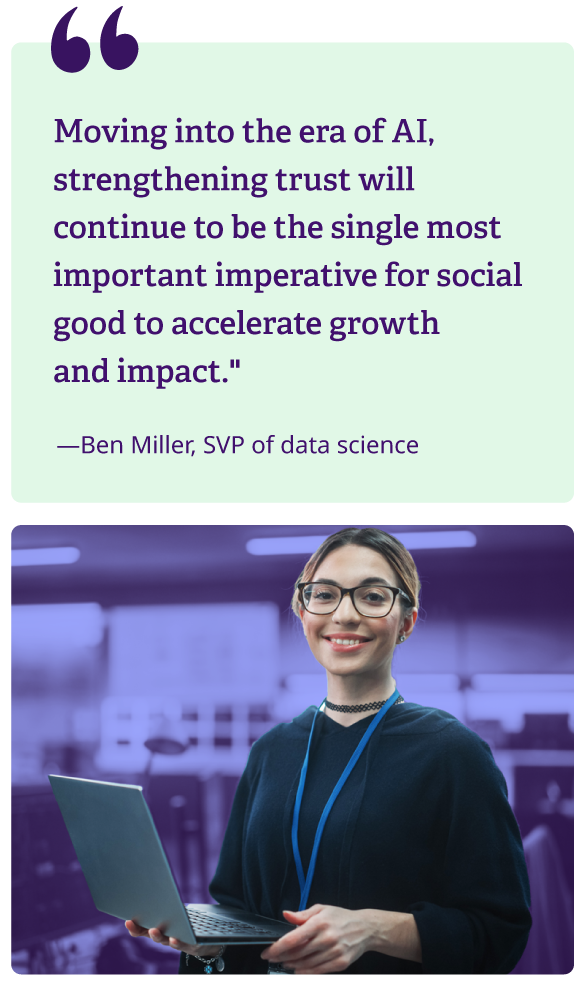
Implementing AI to meet 3% by ‘33
Last year, we launched our 3% by ‘33 initiative: a commitment to increase charitable giving from 2.5% of the U.S. GDP to 3% over the course of 10 years. We can reach this ambitious goal by changing the system and ensuring that every nonprofit is utilizing smart technology.
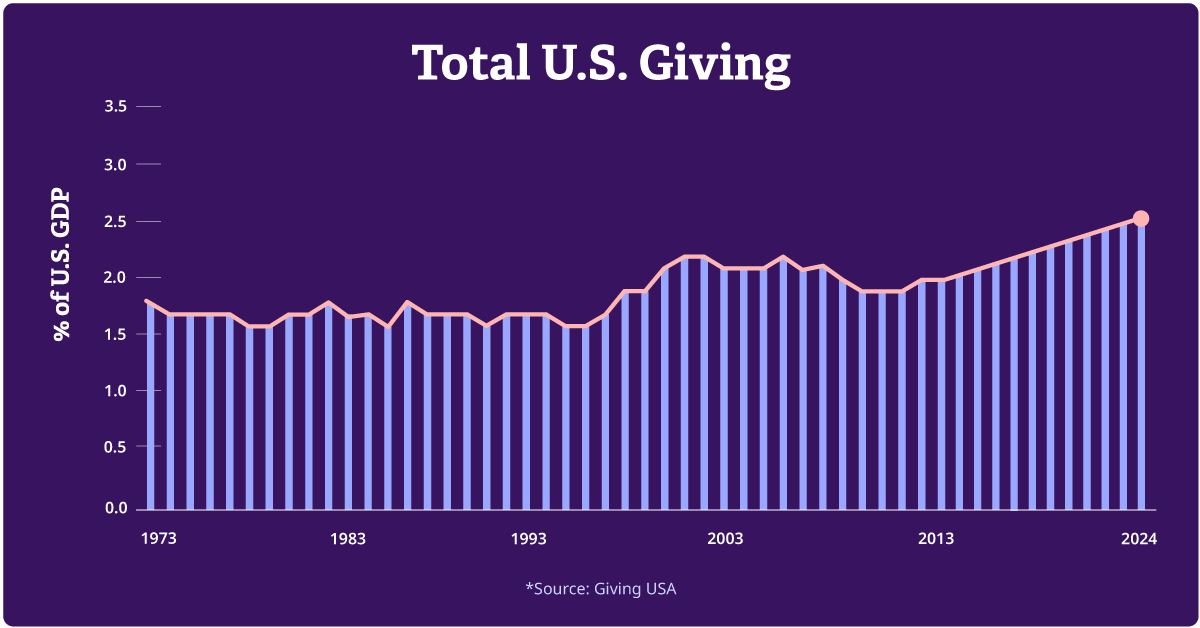
Whether helping nonprofit leaders fundraise, individuals find volunteer opportunities, or corporations and foundations secure their next donation, Bonterra is uniquely positioned to participate in every stage of the social good cycle. We’re the industry leaders in employing AI to demonstrate an organization’s impact. Through data science, our technology enables organizations to connect with donors, funders, and volunteers who achieve targeted results for the best outcomes. We are at the beginning of an era that will positively affect lives on a scale never seen before. And it will be powered by AI and the innovative people who apply it.
Want to learn about Bonterra’s ethical AI values? Read more here.




